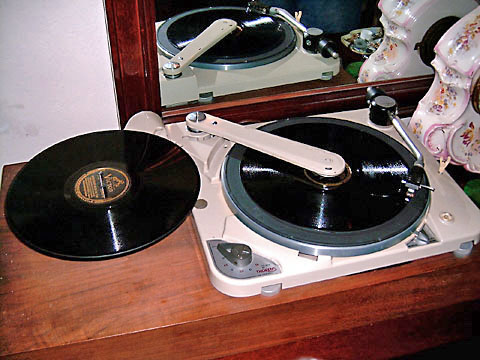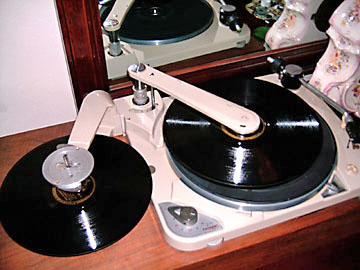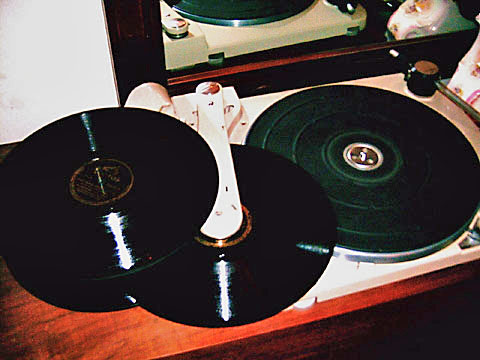-edible zone-
"In 1962 the unique TDW 224 was created. This combination of a top
quality studio turntable and a fully automatic record changer had been
considered impossible until that time. The records were stored away from
the platter and only one record was played at a time. Thus, the vertical
tracking angle of the pick-up stylus always remained the same during
playback. The precise, beam-like record transporter moved one record
after the other from the stack onto the platter and back to a storage
underneath the main stack. Up to 8 records with different diameters
could be played from one stack. The fully automatic studio tonearm
BTD-12 S featured a built-in record cleaner, an automatic shut-off
facility and, of course, it possessed all the advantages of the TD124."
The above quote was taken from a company produced history pamphlet
titled "Thorens, The Fascination of a Living Legend"

The TD224 was nearly twice as expensive as a TD124. Production numbers were low even though it was built from 1962 through 1968. While the TD124 went through an upgrade process to become the TD124 MkII (1966) , the TD224 remained unchanged throughout its production run.

To watch an mpeg movie of this changer in operation click on the
link just below, and either save the movie to your hard-drive or simply play the
movie online with your Windows media player, Apple or similar .
Link to Movie
Comparisons between the TDW224 and the TD124:
- Same arm, BTD12S except for some modifications to the arm base to accommodate automatic functions.
- A one piece non-magnetic* platter, similar to the TD135 platter, is used. But the TD224 platter has strobe markings for 33 and 45 rpm.
- Strobe window is moved from center (TD124) to just left of center.
- To the right of center is a lever to switch between manual and auto operation. (from the TD135)
- The platter bearing of the TD124 is not used. The smaller bearing from the TD135 is used instead. The savings in space makes it possible to accommodate two additional idler wheels, both driven by the same motor that drives the platter, and a host of arms and levers and transmission wheels that make up the changer mechanism.
- Attached to the tonearm headshell is a guide bar used to gage record size. In practice, the record is held in place directly above and over the spindle center by the robot arm for a moment while the tonearm is allowed to bump into the outer rim of the record with its bar to gage the record size. Once this is done the record is dropped down onto the platter and the tonearm follows and finds its way down into the lead-in groove. This feature allows different sized records to be stacked and played.

Credits:These images and the movie are being offered with permission from Carsten who created them. Note there was a link to another site where this and other similar vintage record playters were displayed, but the site is no longer on the web.